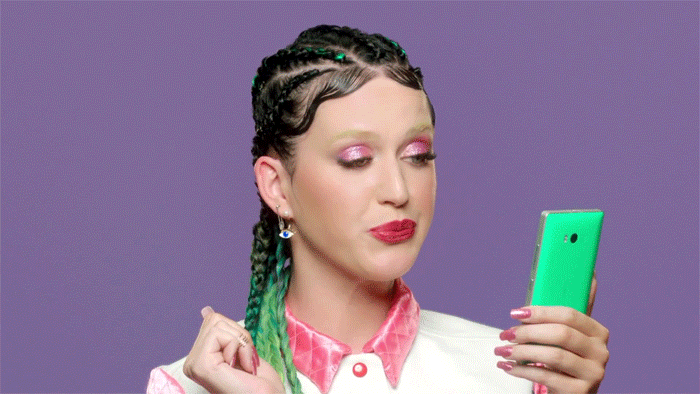When Culture Vultures Attack
The year 2014 brought slang terms such as ‘basic’ and ‘bae’ into the mainstream spotlight. And ironically it also ushered in a new term on my side of the pond: Columbusing.
As seen in this satirical College Humor video, Columbusing happens when the dominant culture (most of the time this refers to people of European descent) adopts elements from non-dominant cultures, then often misuses these elements, and later gets credit for ‘discovering’ them.

(Image via)
Like when Christopher Columbus sailed the ocean blue in 1492, got lost, ended up in the Caribbean, and was honoured for discovering the already inhabited ‘New World’. Then over 500 years later, he continues to be celebrated across the Americas and parts of Southern Europe.
Columbusing at its finest!
Although this phenomenon has occurred for centuries, the introduction of the term inspired articles from a bevy of media outlets. These include a piece on NPR (featuring questions to ask yourself before ‘exploring’ another culture, so you don’t end up being a jerk) to The Root’s ‘8 Things That Have Been ‘Columbused’ This Year’ (‘bae’ in its slang form included). It also brought up an often uncomfortable, yet valid question:
Where does cultural appreciation end and cultural appropriation begin (appropriation being more or less a proper textbook term for Columbusing)?
Cross-cultural appreciation is good. It expands perspectives and allows for greater understanding amongst people (which the world could use more of right now). However, cultural appropriation has the opposite effect. Appropriation usually leads to misunderstandings and resentment. And it also spurs some cringeworthy music videos, like Katy Perry’s ‘This Is How We Do’.

(Image via)
So what are key aspects of cultural appropriation?
1. Cultures Become Belittled
Appropriators are often so interested in appearing cool or edgy that they fail to understand the significance of the cultural elements they’re adopting. This often leads to that culture being simplified, mocked or even fetishised. Geishas become popular Halloween costumes, saris become Western fashion trends, and pop starlets like Lady Gaga use the burqa as an artistic symbol without true knowledge of its significance.
But hey, white people don’t have a monopoly on mocking other race’s cultures (although the connotation differs). Earlier this year, Vice covered Japan’s B-Stylers, who take their fascination with aspects of Black American culture to another level (complete with spray tans and ‘Black for Life’ t-shirts). Also, Pharrell Williams recently came under fire for wearing a Native American headdress on a cover of Elle UK. Not to mention I’m guilty of owning an Aztec-patterned shirt. I guess it wouldn’t be so bad if I had bought it from a seamstress who is of Aztec descent and has knowledge of those cultures instead off the sales rack at Anthropolgie.

(Image via)
2. Credit Isn’t Given
Another common complaint from anyone who has gotten their culture appropriated is that they often fail to receive credit for that cultural element. This past spring, Marie Claire received backlash on Twitter after Tweeting a picture of Kendall Jenner wearing side canerows/cornrows that was captioned ‘Kendall Jenner takes bold braids to a new epic level’… As if she originated the style!
Then the LA Times deemed cornrows as a ‘head-turning fashion for fall’ and failed to name any celebrity of African descent as a ‘forerunner of the trend’. Never mind the fact the fact that cornrows have been popular across the African continent and diaspora since ancient times.
Also, think about the old rock song ‘Hound Dog’. Now who originally made it? Most people would probably say Elvis Presley and not Willie Mae Thornton. The same can be said for many other songs.
Respect Is Key
In the end, what separates cultural appropriation from appreciation is a lack of respect. It’s not only a lack respect for the culture that’s being disrespected but also lack of respect for oneself. There’s nothing wrong with enjoying aspects from other groups. Humans have engaged in cross-cultural exchanges for millennia and virtually every culture has had some sort of outside influence. This is only going to become more pronounced as globalisation continues.
Take Home: Imitation may be said to be the most sincere form of flattery, but the beauty of other cultures can be enjoyed without being a vulture.
If you enjoyed this article, why not check out ‘Black History Month: Shouldn’t This Be Something We ALL Learn About?‘?
Tags: columbusing cultural appropriation Joy respect
Categories: Erin Johnson Rant Wise up!